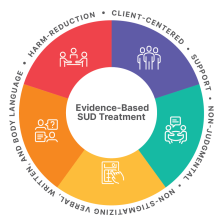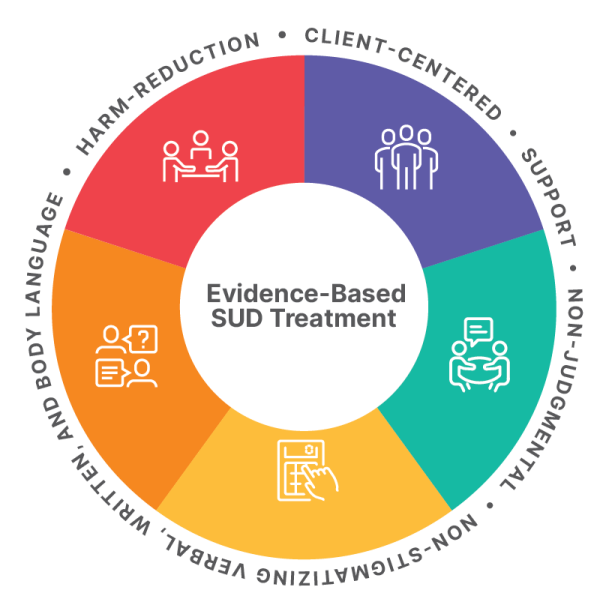
This toolkit of linked resources was created for use by multidisciplinary healthcare team members to improve substance use disorder (SUD)-related health outcomes for people with HIV with SUD(s) in all stages of recovery. The resources have been organized into five components to assist in full implementation of interventions ranging from the use of evidence-based SUD assessments, diagnosing, harm reducing education and resources, behavioral health services, and medication-assisted treatments.
View Toolkit
Introduction
This toolkit of linked resources was created for use by multidisciplinary healthcare team members to improve substance use disorder (SUD)-related health outcomes for people with HIV with SUD(s) in all stages of recovery. The resources have been organized into five components to assist in full implementation of interventions ranging from the use of evidence-based SUD assessments, diagnosing, harm reducing education and resources, behavioral health services, and medication-assisted treatments. Clinic-wide non-stigmatizing and supportive messaging among the entire clinic team is essential as is maintaining financial sustainability to provide for the time and efforts of team members providing these services along with other HIV-related care services. As with the HIV care continuum, each component of the SUD care continuum (prevention, screening, diagnosing, engagement, behavioral health therapy including medication-assisted treatment [MAT] when appropriate) is equally important. Check out the resources in each of the following components and feel free to use them or tailor them to best meet the needs of your patient population.

Introducing a new service requires buy-in and participation from the whole team.
- Mental Health/Substance Use Care Clinic/Health Center Readiness Assessment Tool
- Words Matter: The Power of Language to Strengthen Services for HIV and Substance Use Disorder Discussion Guide
- Interrupting Stigma: A Conceptual Map Depicting Stigma Pathways & Intervening Strategies at the Intersection of HIV and Opioid Use Disorder Toolkit
- Are all subpopulations included in plan? (i.e., adolescents & young adults, LGBTQ+ clients, women, pregnant individuals, clients older than 50 years, all clients with SUD diagnosis even if not HIV and or HCV virally suppressed)
Determine the roles for each of your team members, and what kind of training and support they will need to succeed.
Plan and implement funding, billing, and reimbursement systems.
Which services will you offer in-house versus partnering with an outside agency.
- Screening
- Motivational Interviewing
- SBIRT
- Harm Reduction: SAMHSA Resources, A Safety Manual for Injection Drug Users, and Safer Drug Use Technique Tips
- Cognitive Behavioral Therapy
- Contingency Management
- Tobacco Use Cessation
- Medication-Assisted Treatment (MAT) for opiate use disorder or alcohol use disorder
- American Society of Addiction Medicine Criteria Assessment Interview Guide
Identify and set up relationships with any outside partners for SUD care, support, and needed services. Try to establish a seamless system of care for your clients. Share your SUD services and successes with your partners.
- Emergency Department (alcohol withdraw)
- Inpatient Care (detox) or Residential Treatment Center or MAT
- Harm Reduction Center (SSPs, SAPs)
- Outpatient Treatment Center
- Mental health professional(s) for mental health therapy
- National Suicide Prevention Lifeline (call, text, or chat 988)
